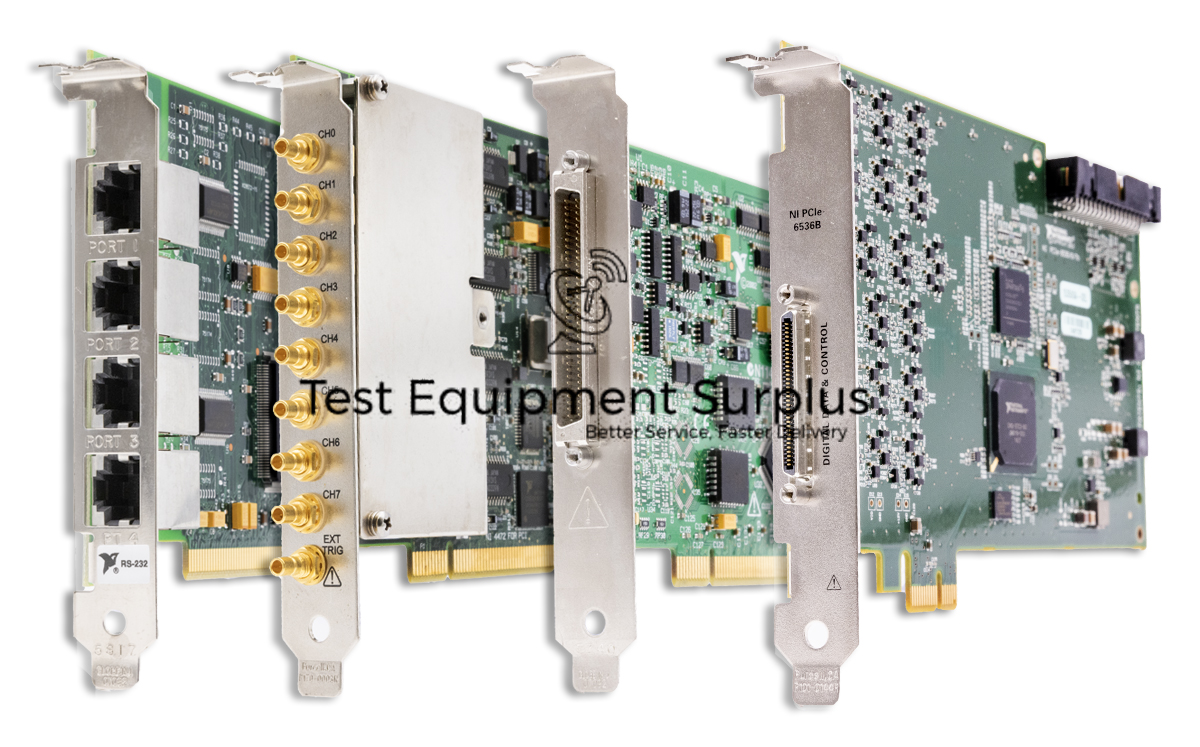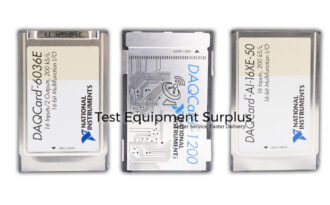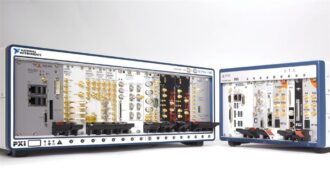Description
The National Instruments PCI-8433/2, part number 779144-01, is a serial instrument control device that supports both RS485 and RS422 communication interfaces, offering versatile connection options for various applications. It features automatically controlled bias resistors for the RS485 interface to maintain a known state when idle, ensuring a minimum voltage differential of 200 mV between the differential pair.
Users have the flexibility to load custom resistor values to tailor the device’s performance to specific needs. The device operates with NI-Serial software, which simplifies programming and device interaction.
The RS-485 interface on the PCI-8433/2 includes four modes of hardware handset control, allowing for efficient management of transmitters and receivers. Additionally, the RS-422 functionality utilizes balanced (differential) transmission lines, which is a standard for ensuring signal integrity over longer distances.
Despite its mature status announced by National Instruments, the PCI-8433/2 remains available for purchase and repair through Apex Waves, ensuring continued support for existing installations and new projects.
| Specification | Detail |
|---|---|
| Part Number | PCI-8433/2 |
| NI Part Number | 779144-01 |
| Communication Interfaces | RS485, RS422 |
| Automatically Controlled Bias Resistors | Yes, for RS485 interface |
| Minimum Voltage Differential | 200 mV |
| Custom Resistor Options | Yes, user can load custom values |
| Software | NI-Serial |
| RS-485 Handset Control Modes | Four modes of hardware handset control |
| RS-422 Feature | Balanced (differential) transmission lines |
| Mature Status | Announced by National Instruments, available at Apex Waves |
Question 1: What are the key features and benefits of the National Instruments PCI-8433/2 serial instrument control device that support its use in various applications requiring RS485 and RS422 communication interfaces?
Answer 1: The National Instruments PCI-8433/2 serial instrument control device offers key features such as support for RS485 and RS422 communication interfaces, automatically controlled bias resistors for RS485 to maintain a known idle state with a minimum voltage differential of 200 mV, the ability to load custom resistor values for tailored performance, compatibility with NI-Serial software for simplified programming, four modes of hardware handshake control for efficient management of transmitters and receivers on the RS-485 interface, and the use of balanced
Question 2: What options does the National Instruments PCI-8433/2 offer for RS485 interface customization, and how does its RS-422 functionality enhance signal integrity for extended transmission distances?
Answer 2: The National Instruments PCI-8433/2 is suitable for applications requiring stable RS485 or RS422 communication interfaces due to its automatically controlled bias resistors which ensure a known idle state and a minimum voltage differential of 200 mV for RS485, support for custom resistor values for tailored performance, and its ability to manage transmitters and receivers efficiently through four modes of hardware handshaking control, along with the use of balanced (differential) transmission lines for RS-422 to maintain signal integrity over
Question 3: What features of the National Instruments PCI-8433/2 make it suitable for applications requiring stable RS485 or RS422 communication interfaces?
Answer 3: The National Instruments PCI-8433/2 offers RS485 interface customization through automatically controlled bias resistors with the option to load custom resistor values for tailored performance, while its RS-422 functionality enhances signal integrity over extended distances by utilizing balanced (differential) transmission lines.
Question 4: What are the key features of the National Instruments PCI-8433/2 serial instrument control device, and how does its support for RS485 and RS422 interfaces benefit various applications?
Answer 4: The National Instruments PCI-8433/2 supports RS485 and RS422 communication interfaces and features automatically controlled bias resistors for the RS485 to ensure a minimum voltage differential when idle, the ability to load custom resistor values for tailored performance, and four modes of hardware handshaking control, while the RS422’s balanced transmission lines help maintain signal integrity over longer distances, making the device adaptable for various applications.
Question 5: What are the communication interfaces supported by the National Instruments PCI-8433/2, and what are the features that allow it to maintain signal integrity and adapt to various application needs?
Answer 5: The National Instruments PCI-8433/2 serial instrument control device features support for both RS485 and RS422 communication interfaces, automatically controlled bias resistors for maintaining a known state on the RS485 interface, the ability to load custom resistor values, and compatibility with NI-Serial software for simplified programming. Its support for RS485 includes four modes of hardware handset control for efficient management, while the RS422 functionality benefits from balanced transmission lines for better signal integrity over longer distances, making the device highly versatile and




